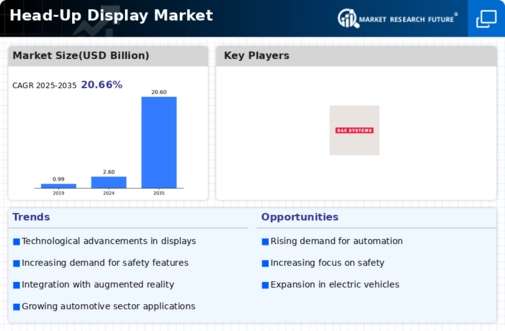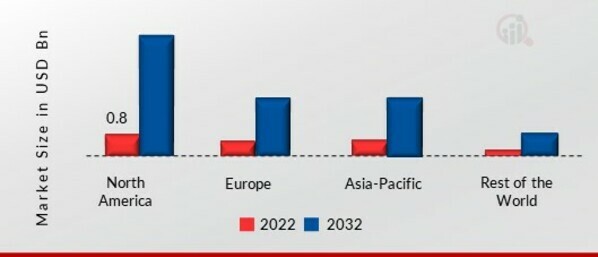Market Trends
Key Emerging Trends in the Head Up Display Market
The market for head-up displays (HUDs) is experiencing a number of noteworthy developments that are impacting consumer and industry participant choices and determining the direction of the market. Augmented reality (AR) integration with head-up displays (HUDs) is one popular trend. HUDs are progressively adding augmented reality (AR) capabilities as technology develops, giving consumers more engaging and interactive experiences. This trend is not limited to automotive applications; the gaming and aviation sectors are now investigating how AR-enhanced HUDs may be used to provide better entertainment and information. The increasing popularity of fully and partially driverless cars is another noteworthy development that is fueling the need for cutting-edge HUD technology. HUDs are essential for providing real-time data, navigation directions, and alarms as the automobile industry evolves toward autonomous driving. This helps to guarantee a smooth and secure transition between manual and autonomous driving modes. This tendency is consistent with the larger movement toward intelligent and networked automobiles, in which head-up displays serve as the primary means of information and communication. Options for customization and customisation are becoming more popular as users look for HUD systems that meet their unique needs. Personalized information and movable display layouts are just two examples of the capabilities manufacturers are adding to let customers customize their HUD experience. This tendency is in line with consumers' rising expectations for technology that responds to their unique demands and makes using it more pleasurable and user-centric. Large-area and transparent display technology usage is also booming in the HUD industry. Thanks to these developments, HUDs can now see a wider area and blend in perfectly with the windshield of the car, eliminating the need for an additional display device. Transparent displays add to the overall attractiveness of HUD technology by enhancing safety by enabling drivers to keep their eyes on the road while accessing vital information. In addition, environmental sustainability is becoming a prominent trend in the home-unit development industry. Manufacturers are looking for methods to lessen the environmental effect of producing and disposing of HUDs since there is an increasing focus on environmentally friendly techniques. This is in line with the worldwide movement towards production that is ecologically conscious and involves the use of recyclable components, energy-efficient technology, and sustainable materials. Manufacturers of HUDs and IT businesses are increasingly forming alliances and collaborations. These strategic partnerships combine knowledge in software development, display technology, and optics in an effort to maximize the capabilities of both sides. These kinds of partnerships encourage creativity and provide HUD systems with cutting-edge features, guaranteeing that businesses stay ahead of the curve in terms of technology and consumer needs. Another noteworthy development is the introduction of head-up displays into new application domains. Although the automobile industry continues to be the major emphasis, HUD technology is spreading into other areas, including gaming, healthcare, and aviation. HUDs, for instance, improve situational awareness for pilots in aviation, and also provide immersive gaming experiences. This range of uses demonstrates how flexible and multipurpose HUD technology is outside of its conventional automotive beginnings. Numerous benefits for the head-up display industry will contribute to its future success. Head-up display devices enhance the driving experience by projecting information onto the front windshield of the car. Because it places information where drivers can readily see it and maintains their focus on the road, this technology is particularly helpful in both the military and the aviation industry. These technologies are often seen in vehicles that have heads-up displays to prevent drivers from using other devices like phones while operating a vehicle. The head-up display market is expanding as a result of the recent significant rise in passengers in the civil aviation sector. The market for head-up displays is anticipated to expand even more in the next years due to the growing demand for these devices.




Leave a Comment